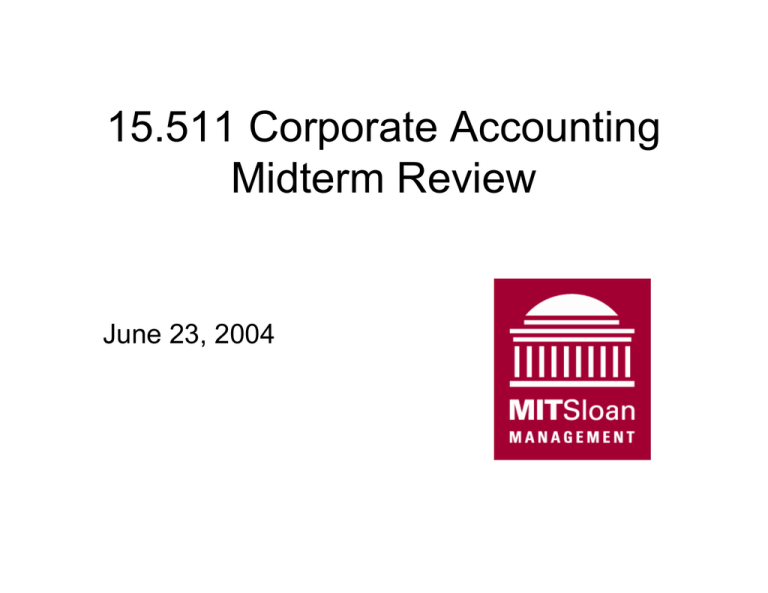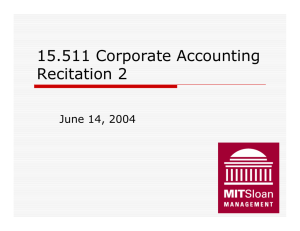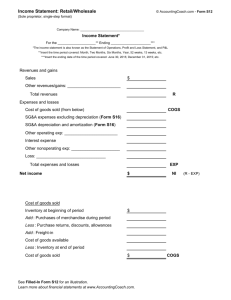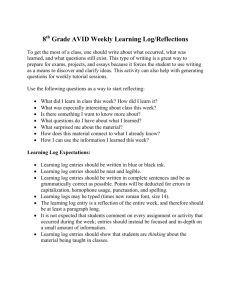15.511 Corporate Accounting Midterm Review June 23, 2004
advertisement

15.511 Corporate Accounting Midterm Review June 23, 2004 Midterm review • General principles – Objectivity, Conservatism, Matching, Revenue Recognition • Balance Sheet, Income Statement and Statement of Cash Flows • Recording transactions – BSE, Journal Entries, T-accounts – Adjusting Entries and Closing Entries • Ratio analysis • Revenue recognition and Account Receivables General principles • Objectivity Principle • Conservatism Principle – Do we capitalize R&D or expense it? – Do we recognize bad debt expense even if we do not know the exact number? • Matching Principle – COGS contains only the cost of the goods sold. The cost of the goods unsold sits in Inventory account. – Adjusting entries: prepaid rent • Revenue Recognition Principle – Do we recognize revenue when we receive advances from customers? Financial Statements – Assets = Liabilities + Shareholders’ Equity – Net Income = Revenues – COGS – Expenses – Ending balance of Retained Earnings = Beginning balance of Retained Earnings + Net Income – Dividends – Total Cash Flow = CFO+CFI+CFF = Change in the balance of Cash on B/S Journal Entries and T-accounts – Increases in assets are debited and recorded on the left side of the T-account – Increases in liabilities are credited and recorded on the right side of the T-account – Increases in revenues are credited and recorded on the right side of the T-account – Increases in expenses are debited and recorded on the left side of the T-account – Remember that the balances of the permanent accounts carry over to the next year! Adjusting Entries – Match expenses to revenues – Involve at least one temporary account (revenue, expense) and at least one permanent account (asset, liabilities) – NEVER involve cash – Expenses and revenues before cash: salary payable, interest receivable – Cash paid or received before recognizing revenue or expense, eg., Advances from customers, prepaid insurance, depreciation. Closing Entries • Bridge Income Statement and Retained Earnings • Close Revenue into R/E by – Dr. Revenues Cr. R/E • Close COGS/Expenses into R/E by – Dr. R/E Cr. COGS/Expenses • How about dividend? Ratio Analysis – Profitability • ROA, ROE • Decomposition of ROA and ROE – Short-term liquidity • Current ratio, quick ratio – Long-term solvency • Debt-to-equity ratio, interest-coverage ratio Account Receivables • Allowance for Doubtful Accounts – Percentage of sales: BDE=% of (credit) sales – Aging: ADAEB=Pr(Uncollectible)*A/R • Journal entries and T-accounts – – – – – When sales made: Dr. A/R Cr.Sales When cash collected: Dr. Cash Cr. A/R To record the bad debt expense: Dr. BDE Cr. ADA To write off specific accounts: Dr. ADA Cr. A/R To reinstate the write-off: Dr. A/R Cr. ADA





